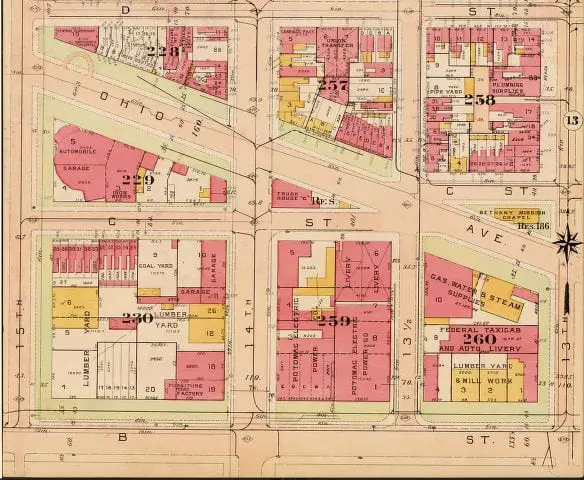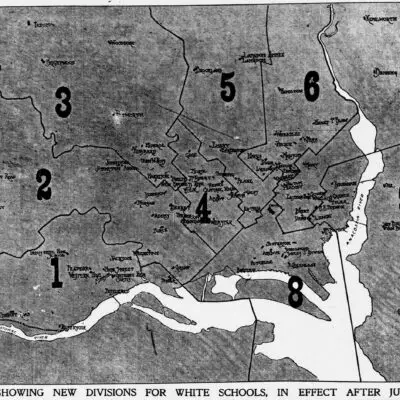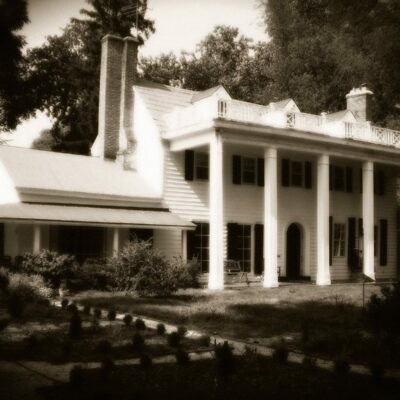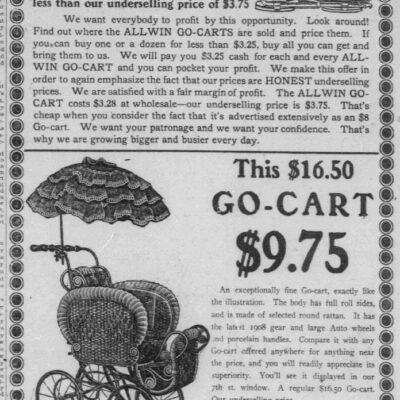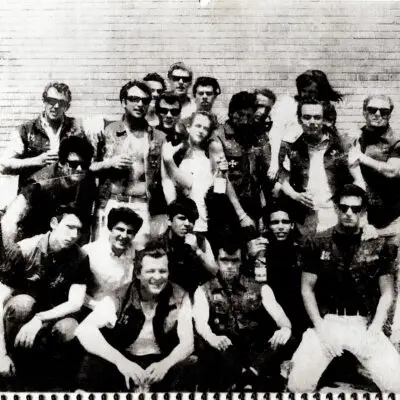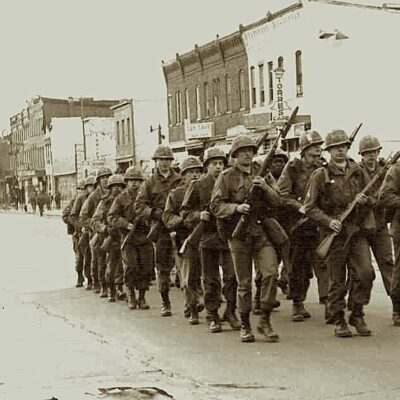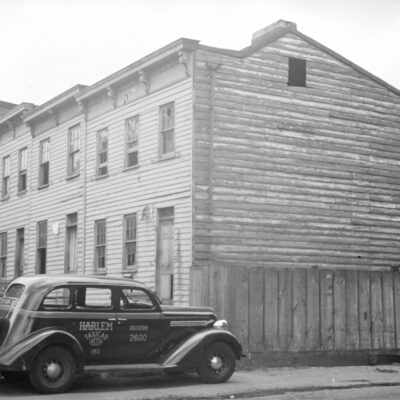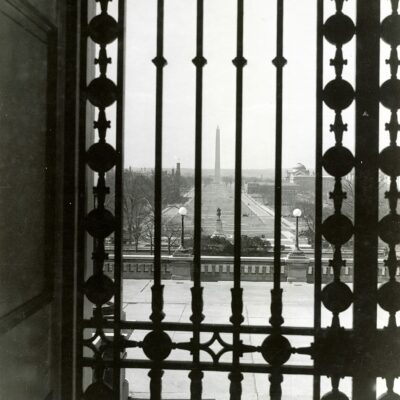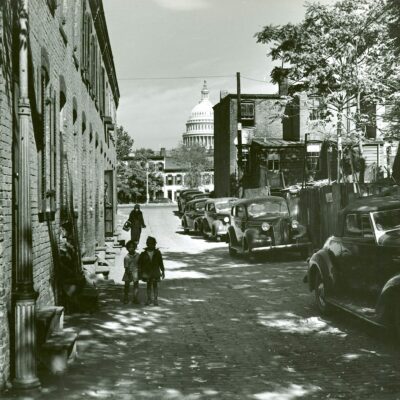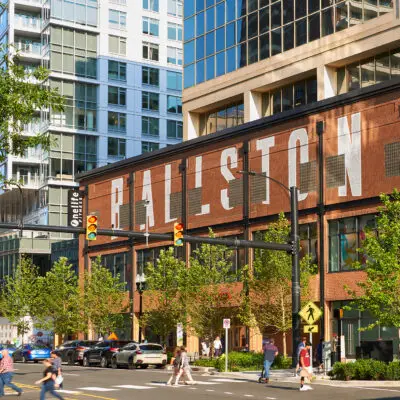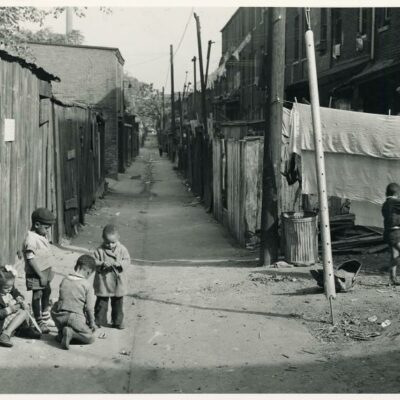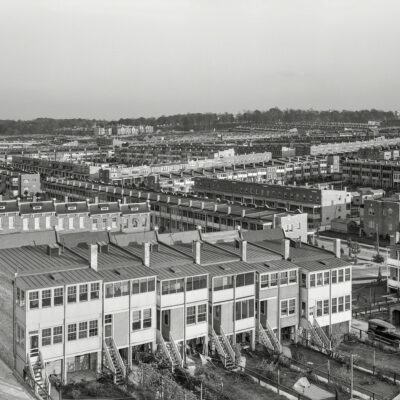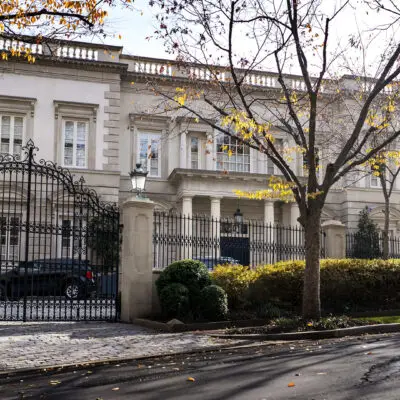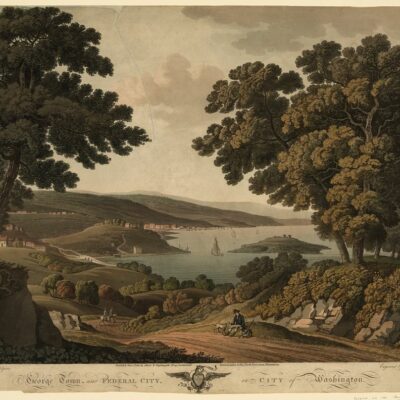The Department of Commerce‘s massive, beast of a building is bound by Constitution Avenue (why is it named Constitution Avenue?), 14th St., Pennsylvania Avenue and 15th St. Construction finished and it opened in 1932, at the end of President Herbert Hoover‘s lame duck presidency and in the depths of the Great Depression.
The Public Buildings Act of 1926 set aside $165 million for the construction of a number of government buildings in Federal Triangle, $17 million of which was dedicated to the Commerce building. In 1929, Herbert Hoover, former Secretary of Commerce, and then president, laid the cornerstone for the building using the same shovel George Washington used when laying the cornerstone of the Capitol Building.
Constructed with 9 million bricks and Indiana limestone, it has 3,300 rooms, has hallways that stretch a 1/5 of a mile and at the time of dedication, was the largest federal office building in the country with 1.8 million square feet of space.
Upon completion, the building required 3,701 radiators to heat the space during the winter, with a total weight of 420 tons. I could go on with these crazy statistics, but I think this building makes a perfect subject for the next “Three Things…” post.
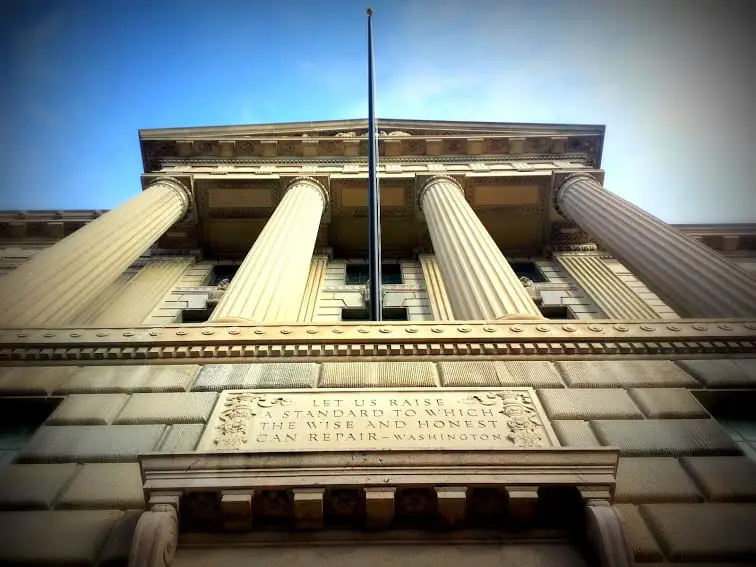
1. Reporter walks 7 3/4 miles of hallways
You could easily complete a marathon by running the hallways of the Commerce Department. The building opened in January 1932 and, that month, a Washington Post reporter spent three hours walking the hallways of the new federal building.
A. N. Wecksler walked 7 3/4 miles of Commerce Department hallways with a pedometer and watch, furnished by the Post’s editor, to determine how many miles of corridor actually existed in the building.
The Washington Post goes a long way to greet the workers of the new Department of Commerce Building as a matter of fact, the editor presented a small watch-like arrangement and good wishes to me with instructions that his regards were to be relayed the workers, and the watch, a pedometer, would check the distance I walked.
A visit to the captain of the guard, Tom Breslin, who assured me that if I lost the way, he would instruct me by telephone which way to turn, began an excursion into the strange and hidden labyrinths of the new structure, of which any single offi,ce floor is larger than that of any other building.
Questioning a few of the passersby on the seventh floor as to their estimate of the length of the corridors, I received replies ranging from five to twenty-five miles. A messenger boy, some one said, could, if his shoes lasted, walk the halls in a day, and perhaps have time for lunch.
A number of persons were walking, some peering at the doors to read the numbers; others seemed to have given up hope and were just wandering.
The corridors are wide and a large diagram of the floor plan is posted near every elevator, with a large star labeled “this star indicates your present location.” You might doubt the sign, but no one has as yet been able to do so on good authority.
The pedometer, housed in a watch pocket, clicked slowly as I paced the halls. Stops at the different offices to impart the message of good will–accordingly silence its click. Thoughts of the watchman as he made the rounds at night, walking the same miles that were being registered on the meter, blended with a vision of a new easy chair that was most likely before some Patent Office official, in the building, for his stamp of approval.
Three hours had passed when the last corridor hove in sight, and an end to the exploration jaunt seemed imminent. The pedometer registered seven and three-quarter miles, and I registered fatigue. It’s a long, long trail through the new Commerce Building, and it gets longer in the walking. Pity the messenger boy who traverses the walks, and don’t forget your roller skates when visiting the Department of Commerce.
And there you have it … 7 3/4 miles of wandering the halls of the Department of Commerce. Any GoDCers work there? How many miles have you walked?
By the way, my GoDC curiosity took over and I had to know at least where this Wecksler guy lived. According to city directories of the time, he resided at 1420 Oak St. NW in Columbia Heights. His given name was Abraham and he was born in 1913, so he was just 19 when he was wandering the halls of the Commerce building, on assignment for the Washington Post.
By 1940, he had left D.C. for Houston with his wife Julia and taken a job as an advertising salesman.
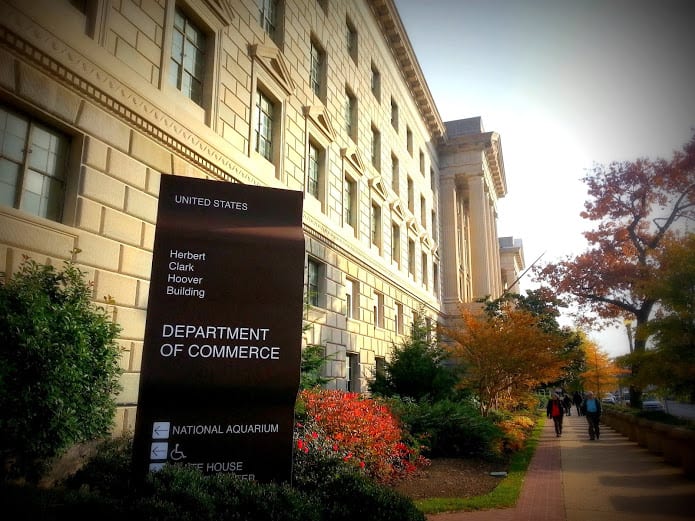
2. Alligators in the building … literally

Um, this is weird. Not just one, but a handful of articles about alligators in the building. In the early days of the building, three humorously named gators lived in the basement of the building. Below is an article from the Washington Post on June 24th, 1932, with a little more detail.
There are just three things causing a great amount of worry among the thousands of Government employes in Washington–Pay Cut, Furlough and Dismissal. But only those working the new Department of Commerce Building have actually come face to face with these problems.
From 9 o’clock in the morning until 4:30 in the afternoon, employes of this building are kept on the jump attempting to avoid Pay Cut, Furlough and Dismissal. Even Secretary of Commerce Lamont directs his steps in the opposite direction when confronted with these problems.
But these folks can’t be blamed, Pay Cut, Furlough and Dismissal are really something to worry about. They are alligators, and have free run of the entire Commerce Department basement.
The three ‘gators came from Chicago, a present of the Bureau of Fisheries. Zoo officials have refused to accept them. There is no room to house them, they say.
Lovely names for the reptiles, but WTF?! Letting alligators roam loose in the basement?
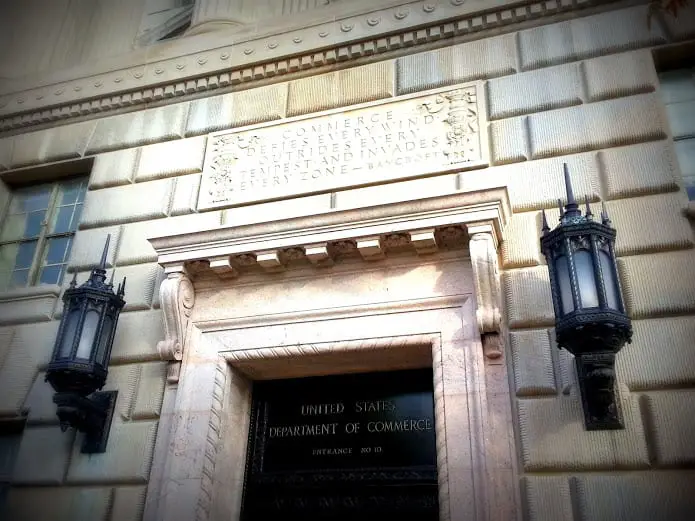
3. Built on top of an ancient pirate, ghost river
Well, not exactly a ghost river, but that’s a catchy name given the blog’s name! A fascinating Washington Post article from August 14th, 1929 mentioned that the building was being constructed right on top of an old, long passed, river bed. This old river didn’t give up its flow, causing water problems with the foundation during construction.
Seepage from a river of a hundred years ago–an historic ribbon of water that now wends its way beneath the streets of Washington–has caused a large pool of water to appear in a portion of the foundation of the new Commerce Building, it was learned yesterday.
The constant flow of this old river, that refuses to be stemmed, will necessitate the installation of seven pumps on the new building to drain off the water, it was discovered. The Roman-like pool that now lies at the end of the foundation nearest Pennsylvania avenue is being allowed to gather so that a test can be made, it was explained.
Years ago, before Washington and L’Enfant visualized the National Capital, a river flowed east from the Potomac. Pirates used this tributary for their nefarious traffic. Proof of this fact was given about a year ago when a boat was excavated as the foundations were being made for the new Revenue Building, the location of which lies in the path of the river.
On and on the river flows, and as long as the new Commerce Building stands there will be danger of damp basement floors if the seven pumps loaf on the job. When the Commerce Building was first started, it was thought that the constant appearance of water in the foundation excavation was from the Potomac, but since then it has actually been proved that the seepage comes from the ancient river, a river whose name has gone with the lost memories of the pirates.
Consequently, the new Commerce Building is a modern castle built upon sand–and upon the bosom of an old river. The foundation of the new building does not rest on bed rock. No bed rock exists. But, as the architects and contractors who are erecting the building will explain, the absence of bed rock will not interfere with its strength.
The construction of the new Government edifice will be as firm as any skyscraper that rests on the bed rock of Manhattan. The entire foundation is anchored and made secure by 13,500 concrete piles. Thes [sic] piles, together with many other kinds of reinforcement, support the steel columns that will form the framework of the new building.
So a huge building to be built upon sand and a river will endure as long as those erected on solid rock. If you are still skeptical, remember that Uncle Sam is particular about the durability of his monuments.
Besides the pumps, an elaborate drainage system will carry off the water that seeps into the foundation. The large pool that now exists will continue to form until architects have discovered the maximum height the seepage will reach. Then, they will know at what point to place the pumps. The pool started July 24 and it is rising about one-half inch a day. Architects believe that in about two weeks it will reach its maximum level.
Public health officials are keeping a careful watch on the pool in case mosquitoes start breeding. Mosquitoes have bred in many small pools that formed in other parts of the foundation and were exterminated through oil. Oil, however, can not be placed in the large pool, as it will destroy the waterproof lining on the foundation sides. If mosquitoes do appear from the test pool a colony of hungry fish will be put in the water to eat the larvae and the eggs, it was announced by public health officials.
Okay, an ancient pirate river? This is one of the most fascinating discoveries we have come across and it makes the building ten times cooler. Spread the word Department of Commerce employees! You are working on top of a river, formerly traversed by swashbuckling pirates! So cool.
